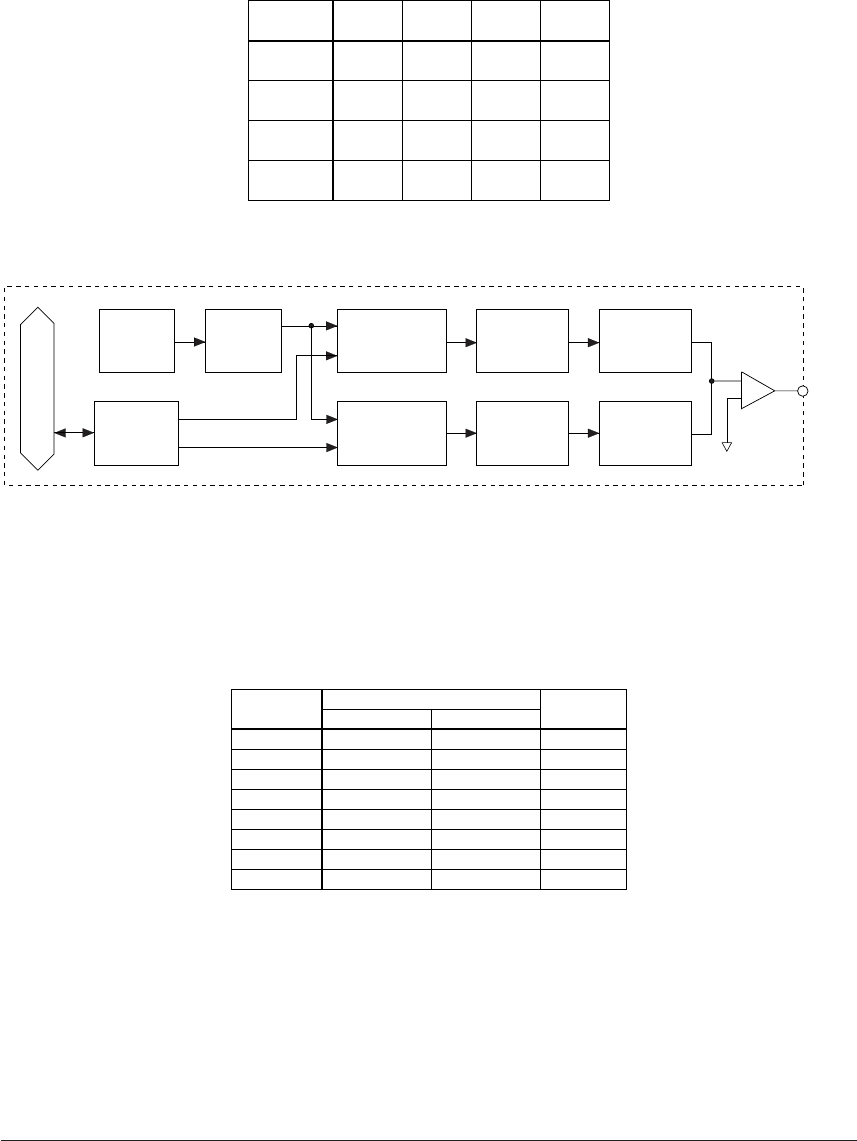
116 EPSON S1C63558 TECHNICAL MANUAL
CHAPTER 4: PERIPHERAL CIRCUITS AND OPERATION (Telephone Function)
4.14.4 Tone mode (DTMF)
In tone mode, the dialer outputs a tone (pushbutton dial) signal. This mode is set by default at initial
reset. To change the mode from pulse mode to this mode, write "0" to the TPS register (FF10H•D3).
The PB (tone) signal generates two different frequencies that are determined by the pushed button in the
push button matrix as shown in Table 4.14.4.1.
Table 4.14.4.1 PB frequency combination
Frequency
(Hz)
ROW1
697
ROW2
770
ROW3
852
ROW4
941
COL1
1209
1
4
7
∗
COL2
1336
2
5
8
0
COL3
1477
3
6
9
#
COL4
1633
Unused
Unused
Unused
Unused
The row and column frequencies and the compound tone signal are generated by the DTMF (Dual Tone
Multi-Frequency) generator. Figure 4.14.4.1 shows the block diagram of the DTMF generator.
Data bus
Control
registers
TONE
Row group
programmable
divider
Column group
programmable
divider
SINR
SINC
Sine-wave
pattern
ROM
Sine-wave
pattern
ROM
D/A
converter
D/A
converter
+
–
Vref
3.58 MHz
oscillator
Frequency
divider
Fig. 4.14.4.1 DTMF generator block diagram
As shown in Figure 4.14.4.1, the DTMF generator generates each frequency by dividing the OSC3 (3.58
MHz) clock. Therefore, the OSC3 oscillation circuit must be turned ON before using the DTMF generator
(it is not necessary to switch the CPU system clock to OSC3).
Two frequency dividers are provided for the row group and column group. The actual generated frequen-
cies are listed in Table 4.14.4.2. They may include an error within tolerance due to the dividing method.
Table 4.14.4.2 Standard vs actual frequency
ROW/COL
ROW1
ROW2
ROW3
ROW4
COL1
COL2
COL3
COL4
Standard
697
770
852
941
1209
1336
1477
1633
Tone output frequency (Hz)
Actual
701.32
771.45
857.17
935.10
1215.88
1331.68
1471.85
1645.01
Error (%) *
+0.62
+0.19
+0.61
–0.63
+0.57
–0.32
–0.35
+0.74
∗ Errors (%) do not include oscillator drift.


















